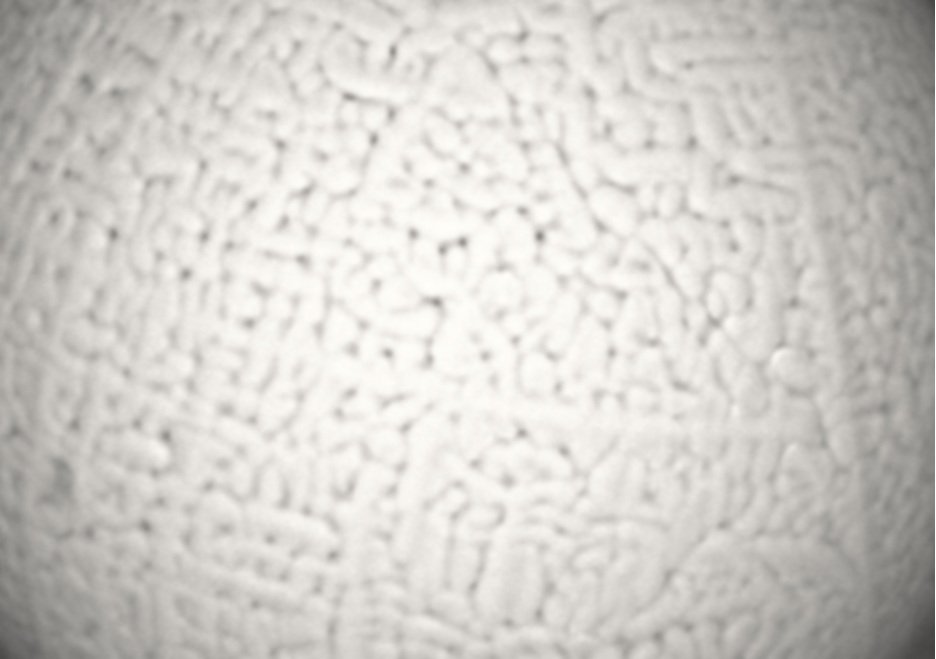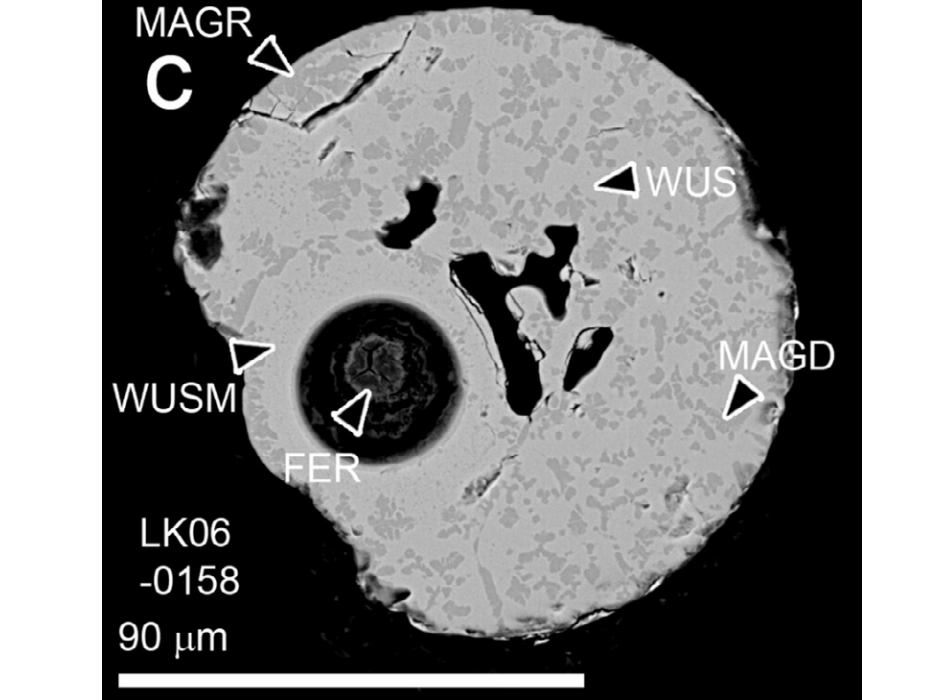
I-type Cosmic Spherules
I-types are by far the most common cosmic spherules found in sedimentary rocks, but rare in rooftop collections. They are dominated by iron-oxide minerals called wüstite and magnetite with minor amounts of Ni and platinum group elements concentrated into small spherical “nuggets”. They are currently split into three broad categories based on the presence of a “metal bead” - a rounded interior section which has not been oxidised during entry.
We are working on creating a filterable database to make our collections easily searchable and understandable. We aim to get this done as soon as possible.
Please contact us if you have any questions
OX I-type - metal bead-free, oxide-dominated spherules consisting of mixtures of magnetite and wustite dendrites (DEN). The magnetite content they have can influence the shape of the dendrites: magnetite-poor varieties have thin "re-entrant" dendrites, whilst magnetite-rich have coarse-grained "barred" or "equant" magnetite crystals.
MET I-type - metal-bead bearing spherules have iron-oxide shells dominated by wustite. They can be homogeneous (no observable crystal boundaries) or dendritic (composed of Christmas-tree patterned crystals). The often have evidence of metal beads on their surface such as pits and thick magnetite rims.
OXMET (transitional) I-type - spherules which share textural and mineralogical features of both MET and OX spherules. They commonly have wustite mantles (WUSM) surrounded metal beads which could be weathered into ferrihydrite (FER, an oxyhydroxide mineral), and magnetite rimes (MAGR).
Fossil I-types
What are Fossil I-types?
Fossil micrometeorites (MMs) are tiny cosmic dust particles, typically less than 2 mm in diameter, that have survived atmospheric entry heating and are later preserved within lithified sedimentary rocks⁽ʳᵉᶠ⁾ ⁽ʳᵉᶠ⁾.
The majority of these are classified as I-type cosmic spherules — iron-rich particles that have undergone significant melting and oxidation, forming sub-spherical shapes.
These are frequently found in limestone formations⁽ʳᵉᶠ⁾ ⁽ʳᵉᶠ⁾, but have also been found in salt deposits ⁽ʳᵉᶠ⁾ and chalk too ⁽ʳᵉᶠ⁾.
-
-
A typical I-type is small and rounded and has a smooth or slightly pitted surface. They often appear metallic grey to black, and fossilized examples may look rusted due to further oxidation over time.
Under an electronic microscope, they may show fine crystal structures called dendrites which can be subclassified based on their shape. Features indicating they have been weathered during diagenesis* include cracks, embedded sediment grains and mottled appearing surface.
*Diagenesis refers to the effects of sediment compaction and lithification caused by pressure changes and water-rock interactions after deposition
-
They are composed mostly of iron and iron oxides such as magnetite and wüstite. Sometimes they can contain small amounts of nickel and or chromium, which helps confirm their extra-terrestrial origin, but most do not since these elements leach out during the particles’ time on the seafloor prior to burial. Trace amounts of Ti and Mn are common since these terrestrial signatures have been implanted into the particle during diagenesis. The iron oxides on the surface can rust and transform in aluminosilicates, or be covered in clay minerals. In backscattered electron images (BEIs)*, these appear as thick shells with low brightness and high peaks in aluminium and silica.
*BEIs are scanning electron microscope (SEM) images that show differences in material composition by detecting electrons reflected from a sample. Heavier elements appear brighter, and lighter ones appear darker, helping to visualize composition using contrast.
The following fossil I-types have all been found in Cretaceous chalk from the South England Chalk Group and belong to our collections…











